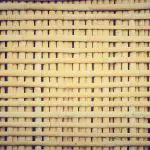Yeah, rain can actually damage nylon if it's exposed frequently. Nylon's pretty good at repelling water thanks to its hydro bonds, but it still absorbs some water. This makes it heavier and less comfortable to wear. Over time, that extra water weight and the prolonged moisture can weaken the nylon fibers, making them less durable. Even worse, if the nylon stays wet for too long, it might start growing mildew. There's more to it, especially considering the impacts of conditions like acid rain which can further break down the fabric's strength. Stick around to learn how to better protect your nylon gear.
Table of Contents
Key Takeaways
- Rain increases nylon's weight and reduces comfort by making it heavier when wet.
- Prolonged moisture exposure in nylon can lead to mildew growth.
- Wet conditions weaken nylon fibers, decreasing the material's durability.
- Acid rain specifically targets nylon's structure, breaking down its strength via acid hydrolysis.
- Regular exposure to rain can cause nylon to lose shape and become prone to wrinkling.
Understanding Nylon Material
Nylon's water resistance stems from its unique molecular structure, which cleverly uses hydro bonds to fend off water. This feature makes it a go-to material for items that need to stay dry. What's fascinating is how these hydro bonds create a barrier that keeps water molecules at bay. It's not just about keeping dry, but also about quick drying, which is a huge plus for anyone in a hurry.
Now, when we compare nylon and polyester, both are champions in the water-resistant and quick-drying league. However, nylon has a slight edge due to its ability to handle varying levels of water resistance, typically ranging from 1000mm to 20000mm. This range means that some nylon products can resist a light drizzle while others can withstand a heavy downpour before they start letting water through.
But here's the kicker: nylon's resistance can falter under prolonged exposure to water or high pressure. That's why many opt to boost nylon's water resistance with protective coatings like silicone or polyurethane. These enhancements not only reinforce the material's ability to repel water but also ensure the quick-drying feature remains effective, keeping the material lightweight and comfortable to use.
Effects of Rain on Nylon
When it rains, nylon can soak up water, which might change how well it works and how long it lasts.
I'll look at how quickly nylon absorbs water, what happens to its durability when it's wet, and how fast it can dry.
These factors are crucial for anyone who uses nylon gear outdoors, so let's get into it.
Water Absorption in Nylon
Rain makes nylon absorb water, which increases its weight and decreases comfort. When it absorbs water, the fabric not only becomes heavier but also feels less pleasant against the skin. You know that clammy feeling you get? That's because of the water the nylon holds onto.
This isn't just about discomfort, though; it also impacts the fabric's performance. For instance, the drying time shoots up significantly. If you've ever waited for a nylon jacket to dry, you'll understand the struggle!
Moreover, this absorbed water can lead to other issues like promoting bacterial growth. That's something you definitely don't want! Careful drying and maintenance are crucial to prevent these problems and help maintain the durability of the nylon.
Nylon Durability When Wet
Exposing nylon to rain can gradually weaken its fibers, reducing both strength and overall durability. When nylon gets wet, it becomes heavier and less resilient. This change might lead to stretching or even tearing, especially if the rain exposure is frequent.
The fundamental differences in how various types of nylon repel water can also play a significant role in how much damage occurs. Some nylons handle moisture better than others. However, all nylon types can suffer from prolonged moisture exposure, which can lead to mildew growth, further compromising their integrity.
It's crucial to understand these aspects to manage and maintain nylon products effectively, ensuring their longevity despite the challenges posed by rain.
Drying Speed of Nylon
Nylon's ability to dry quickly after a rain makes it a top choice for outdoor gear. Its hydrophobic nature means it doesn't just soak up water, which is a huge plus. You won't be left with a heavy, waterlogged piece of clothing or equipment. Instead, nylon sheds water, reducing any risk of damage from staying wet too long.
Here's a quick breakdown:
| Feature | Benefit |
|---|---|
| Hydrophobic | Repels water |
| Quick drying | Minimizes moisture absorption |
| Durable in rain | Maintains integrity and strength |
Keeping your nylon gear in top shape is straightforward—just ensure it's dry before storing and you're good to go. This fabric's resilience in wet conditions really sets it apart.
Acid Rain and Nylon Degradation
Acid rain really does a number on nylon, breaking down its strength and structure. When I dug into what happens to nylon under the influence of acid rain, the results were quite alarming. Acid rain isn't just your run-of-the-mill rain—it's rain that carries pollutants like sulfuric and nitric acids. This type of rain can wreak havoc on nylon, a material many of us rely on for everything from outdoor gear to flags.
Acid rain attacks nylon through a process known as acid hydrolysis. This specifically targets the amide linkages in nylon's molecular structure, leading to chain scission. What does this mean in simpler terms? Well, the nylon fibers start breaking apart at a molecular level. This degradation manifests as:
- Decreased breaking strength: The material becomes weaker and more prone to tearing.
- Reduced elongation capability: Nylon loses its stretchiness, making it less flexible.
- Lower molecular weight: The fibers themselves become smaller in size, which compromises the fabric's integrity.
Understanding these impacts is crucial for anyone using nylon products in areas prone to acid rain. It's all about keeping our gear in top shape and knowing why sometimes it fails us.
Physical Changes in Wet Nylon
When nylon gets soaked, it undergoes noticeable physical changes like stretching and sagging. I've seen how a rainy day can transform my sturdy backpack into a droopy sack. It's not just about looking a bit sad; this stretching and sagging mean the material can't bounce back as it once did. Wet nylon becomes heavier too, which adds to the whole sagging situation.
Wet nylon's tendency to wrinkle and lose shape really complicates things. It's like once it has stretched out, it doesn't know how to go back to its original form. This lack of shape retention is a big deal, especially if you're relying on nylon gear for consistent performance.
Here's a quick table to lay out these issues more visually:
| Physical Change | Result |
|---|---|
| Stretching & Sagging | Reduced structural integrity |
| Increased Heaviness | Added strain on fabric |
| Loss of Shape Retention | Prone to wrinkling |
Chemical Impact on Nylon Fibers
Beyond the visible wear, the chemical effects of rain on nylon fibers are equally concerning. When we delve into the chemical structure of nylon, it becomes clear that acid rain is a real enemy. Acid rain primarily causes a reaction known as acid hydrolysis at the amide linkages in nylon. This process can seriously mess up the fiber's integrity.
Here's what happens at a molecular level:
- Acid hydrolysis leads to chain scission, breaking the long molecular chains into shorter ones. This reduces the overall molecular weight and, importantly, the strength of the nylon.
- This chain scission isn't just a minor issue. It results in physical changes too, like the formation of deep cavities and rougher surfaces. Not only does this affect the feel of the nylon, but it also impacts how it wears over time.
- With the increase in NH2 concentration and carbonyl carbon peak intensity, we're seeing a chemical degradation that's often marked by a distinct yellowing of the fibers. It's a tell-tale sign of chemical wear.
This degradation doesn't just compromise the look and feel of nylon; it significantly reduces its lifespan and functional qualities, making it less reliable for long-term use.
Long-Term Damage From Rain
Rain's persistent touch doesn't just dampen; it gradually weakens nylon, compromising its strength and longevity. When I think about how often I've left my nylon gear out in the rain, I realize I might've been setting myself up for a problem. You see, prolonged rain exposure does a number on nylon. It's not just about getting wet; it's about what happens to the fabric over time.
The rainwater isn't just water—it can carry pollutants that break down the fibers in the nylon. This degradation doesn't happen overnight, but each raindrop contributes to a cumulative effect that weakens the fabric. Also, if nylon doesn't dry properly, it can start to absorb moisture. This not only makes it heavier but can lead to mold and mildew, which bring their own set of problems like bad smells and further material breakdown.
I've learned that taking care of my nylon items is crucial. After they get wet, drying them out thoroughly and storing them properly makes a huge difference. This kind of maintenance helps in mitigating the long-term effects of rain, preserving both the functionality and appearance of the nylon. So, a little effort goes a long way in keeping my gear in top shape!
Testing Nylon's Water Resistance
How well does nylon hold up against water, really? To answer this, I've looked into how the water resistance of nylon is tested and what factors influence it. Nylon's resistance to water isn't a one-size-fits-all figure. It varies significantly based on the type of nylon and how it's constructed. The range can be quite broad, from 1000mm to a robust 20000mm.
Understanding the technical side, water resistance in nylon is quantified using grams per 1000 meters of thread and the fabric's density. This measurement gives us an idea of how much water pressure the nylon can withstand before it starts letting water through.
Here are a few key points:
- Molecular Structure: Nylon has a unique molecular setup with hydro bonds that form a barrier against water.
- Fabric Density: Denser fabrics generally provide better protection because they've tightly woven fibers.
- Exposure Conditions: Under prolonged exposure or high pressure, even the best nylon can begin to falter, allowing water to penetrate.
Nylon offers a decent shield against water, but it's not completely infallible. Knowing its limitations helps in choosing the right type of nylon for your needs.
Enhancing Nylon's Durability
Now that we've seen how nylon holds up to water, let's talk about making it even tougher.
We can start by exploring how waterproofing, UV protection, and regular upkeep can significantly boost nylon's durability.
These steps not only help it resist rain better but also extend its life when facing the elements.
Waterproofing Nylon Fabrics
To boost its durability, nylon fabric can be treated with waterproof coatings like silicone or polyurethane. These materials add a layer of protection that keeps water from soaking into the fabric, which is key for gear like raincoats or camping equipment. By blocking water, these coatings help maintain the fabric's integrity and prolong its life.
Here are some popular methods to apply these coatings:
- Spraying: A quick way to cover large areas of fabric.
- Laminating: Bonds a protective layer to the nylon for added durability.
- Printing: Allows for targeted application, adding style along with functionality.
Learning these techniques ensures your nylon items stay dry and last longer, even in wet weather.
UV Protection Techniques
In enhancing the durability of nylon, adding UV stabilizers during the manufacturing process is a key technique. These stabilizers are crucial because they prevent UV radiation from breaking down the nylon molecules. This prolongation of lifespan means your nylon items aren't just stronger; they also retain their color better, which is great if you use them outdoors a lot.
Opting for nylon products that are already treated with UV protectants is a smart move. It's like choosing a sunscreen for your gear! These products are more resistant to UV damage, which is essential for maintaining their integrity and functionality over time. Remember, it's all about keeping those nylon fibers as tough as possible!
Regular Maintenance Tips
Keeping your nylon gear in top shape requires some regular TLC. I've learned that simple habits can significantly extend its life and performance. Here's what I do:
- Clean it regularly: Dirt and debris can wear out nylon, but a gentle wash keeps it in prime condition.
- Store it properly: I avoid places with high humidity or direct sunlight, which can degrade the fabric.
- Inspect and repair: Any signs of fraying or damage? I tackle them immediately to avoid bigger issues later.
I also steer clear of harsh chemicals like bleach when cleaning. They can weaken the fibers. And sometimes, I use a protective spray to boost its durability and water resistance. Just a little care makes a huge difference!
Maintenance Tips for Nylon
I make sure to regularly clean my nylon gear to keep dirt and debris from weakening the fabric. It's not just about looking good; dirt can actually break down the fibers over time, reducing the durability and effectiveness of the material. So, a gentle wash with mild soap does the trick, avoiding harsh chemicals or bleach that could mess with the nylon's inherent water resistance.
Storing my nylon items is another key aspect. I always pick a cool, dry place away from direct sunlight. UV rays can be pretty harsh and can degrade the fabric faster than you'd think.
Every few months, I check if my outdoor nylon gear needs a new waterproofing treatment. It's a simple step that maintains its resistance to water and extends its life, especially useful for items I use frequently in wet conditions.
Regular inspections for any tears or signs of wear are crucial too. Catching small issues early means I can fix them before they turn into big problems. Taking these steps ensures my nylon gear stays functional and looks great for as long as possible, saving me money and hassle in the long run.
Comparing Nylon With Other Fabrics
Let's compare nylon with other fabrics to see how it stacks up in terms of water resistance. Nylon is naturally water-resistant thanks to its hydrophilic properties, which means it can handle a bit of moisture. However, this fabric isn't completely unfazed by rain. If nylon gets soaked, it starts to absorb water, making it heavier and less comfortable.
On the other hand, polyester is a stronger contender for rainy days. It's hydrophobic, which means it's more adept at repelling water. This feature makes polyester a go-to fabric for those who need reliable protection against wet weather. But nylon isn't out of the race yet! It can be treated with waterproof coatings to boost its resistance to water, making it more comparable to polyester in rainy conditions.
Here are a few key points to remember about nylon and water:
- Nylon absorbs water more than polyester, becoming heavier when wet.
- Polyester is more effective at repelling water right off the bat.
- Waterproof treatments can enhance nylon's resistance to rain.
Understanding these differences helps in choosing the right fabric for your needs, especially when dealing with rain.
Frequently Asked Questions
Is Nylon Resistant to Rain?
Yes, nylon is resistant to rain to a degree. It's designed to handle light rain well thanks to its hydro bonds, but heavy rain or prolonged exposure can eventually seep through.
Is 100% Nylon Rain Proof?
No, 100% nylon isn't rainproof. It's water-resistant, meaning it can handle light rain, but heavy rain will soak through eventually. Adding a waterproof coating can really boost its resistance to water.
Does Nylon Lose Strength When Wet?
Yes, nylon does lose strength when wet; it can weaken by up to 15%. Water affects its hydrogen bonds, leading to reduced tensile strength and increased susceptibility to tearing and abrasion.
Does Nylon Stay Waterproof?
Nylon doesn't stay waterproof indefinitely. Over time, it needs recoating due to exposure to rain and other elements. I ensure my gear's longevity by regularly reproofing it to maintain its water resistance.
- Does Rain Damage Nylon? - April 19, 2024
- Is Nylon Sun Proof? - April 19, 2024
- Does Water Destroy Nylon? - April 19, 2024








